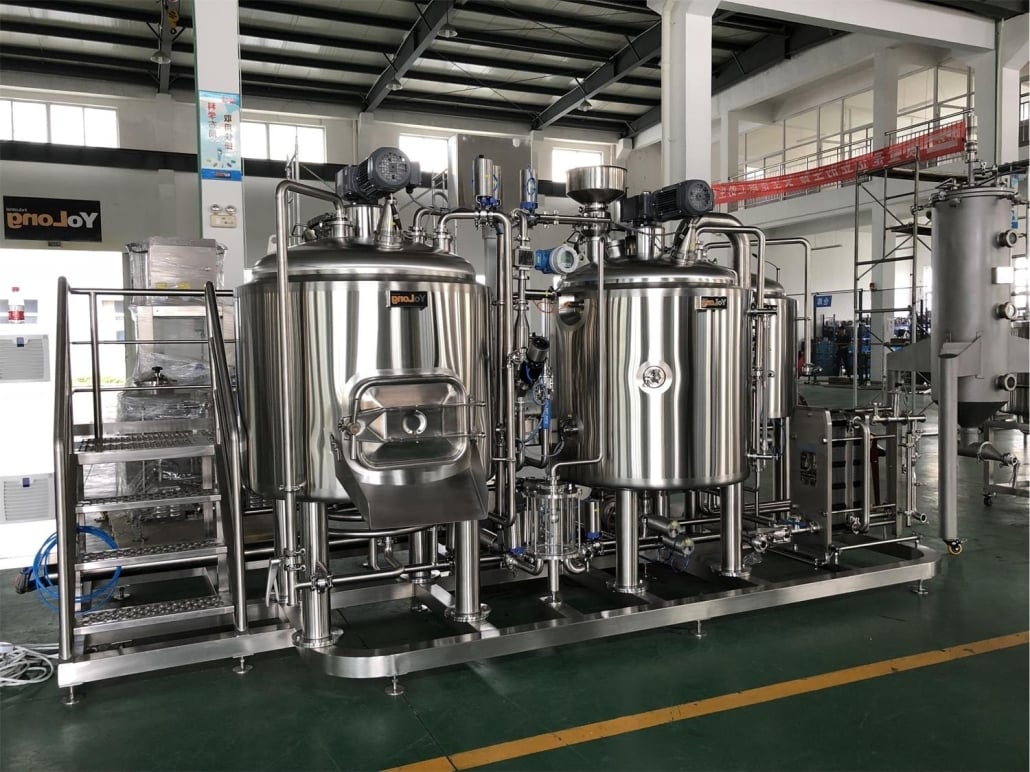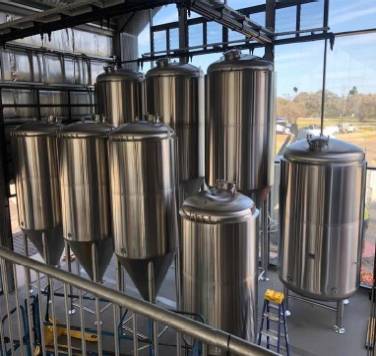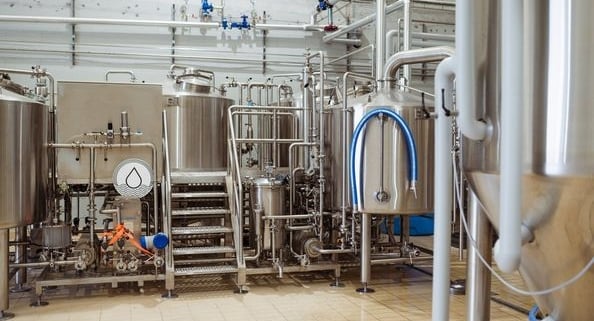Commercial Kombucha Brewing Equipment
Overview
Kombucha, the fizzy, fermented tea that’s taking the world by storm, has seen a surge in popularity over the last decade. With its unique taste and health benefits, more and more entrepreneurs are diving into commercial kombucha production. But before you can start brewing on a large scale, you need to understand the intricacies of commercial kombucha brewing equipment. This guide will walk you through everything you need to know—from the types of equipment you’ll need to the brewing process, customization options, and how to choose the right supplier. Whether you’re just starting out or looking to upgrade your setup, this comprehensive guide will help you navigate the complexities of commercial kombucha brewing.
Equipment Guide for Commercial Kombucha Brewing
Brewing kombucha on a commercial scale requires specialized equipment designed to handle larger batches while maintaining quality and consistency. Let’s delve into the essential components you need for a commercial kombucha brewing setup.
Key Equipment Types
When setting up your commercial kombucha brewing operation, you’ll need various types of equipment, each serving a specific purpose in the brewing process. Here’s a detailed look at the main equipment types:
- Brewing Vessels: These are the large containers where the primary fermentation takes place. Stainless steel tanks are popular due to their durability and ease of cleaning.
- Heating and Cooling Systems: Maintaining the right temperature is crucial for fermentation. You’ll need systems to both heat and cool your brew, ensuring it stays within the optimal temperature range.
- Filtration Systems: To ensure your kombucha is free from unwanted particles, a good filtration system is essential.
- Bottling and Packaging Equipment: Once your kombucha is ready, you’ll need equipment to bottle and package it efficiently.
- Cleaning and Sanitization Equipment: Keeping your equipment clean is vital for preventing contamination. Invest in high-quality cleaning and sanitization tools.

Types of Commercial Kombucha Brewing Equipment
| Equipment Type | Description |
|---|---|
| Brewing Vessels | Large stainless steel tanks designed for fermenting kombucha. |
| Heating Systems | Equipment to maintain the required temperature during fermentation. |
| Cooling Systems | Tools to cool the brew when necessary, ensuring it doesn’t overheat. |
| Filtration Systems | Filters to remove impurities and unwanted particles from the kombucha. |
| Bottling Equipment | Machinery for efficiently bottling and packaging the finished product. |
| Sanitization Tools | Essential for maintaining hygiene and preventing contamination. |
The Brewing Process
Brewing kombucha commercially involves several stages, each requiring specific equipment and careful attention to detail. Here’s a breakdown of the process:
- Preparing the Tea Base: The process begins with brewing a large batch of tea, typically black or green tea, and sweetening it with sugar.
- Primary Fermentation: The sweet tea is transferred to the brewing vessels, where the SCOBY (Symbiotic Culture of Bacteria and Yeast) is added. This stage usually takes about 7-30 days, depending on the desired flavor profile.
- Secondary Fermentation: After the primary fermentation, the kombucha is transferred to secondary fermentation vessels. This is when flavors like fruit or herbs are added, and the brew is left to ferment for a few more days.
- Filtration and Carbonation: Before bottling, the kombucha is filtered to remove the SCOBY and other particles. Carbonation can be added at this stage if desired.
- Bottling and Packaging: The final step is bottling the kombucha and preparing it for distribution.
Brewing Process Details
| Process Step | Description |
|---|---|
| Preparing the Tea Base | Brew large batches of sweetened black or green tea. |
| Primary Fermentation | Transfer sweet tea to brewing vessels, add SCOBY, and ferment for 7-30 days. |
| Secondary Fermentation | Add flavors and ferment for additional days. |
| Filtration and Carbonation | Filter out SCOBY and add carbonation if desired. |
| Bottling and Packaging | Bottle the kombucha and prepare for distribution. |
Customization Options for Equipment
Customizing your kombucha brewing equipment can help you optimize your production process and meet specific needs. Here are some key customization options:
- Capacity: Depending on your production scale, you can choose tanks and vessels of varying capacities.
- Design and Layout: Customize the layout of your brewing setup to fit your space and workflow.
- Material Options: While stainless steel is common, you can also opt for other materials depending on your budget and needs.
- Automation: Incorporate automated systems for tasks like temperature control, carbonation, and cleaning to improve efficiency.
- Aesthetics: If your brewing area is visible to customers or part of a tour, consider the aesthetic appeal of your equipment.
Customization Options for Brewing Equipment
| Customization Aspect | Details |
|---|---|
| Capacity | Choose vessels with varying capacities based on production needs. |
| Design and Layout | Optimize the layout to fit your space and workflow. |
| Material Options | Stainless steel, plastic, or other materials. |
| Automation | Incorporate automated systems for efficiency. |
| Aesthetics | Enhance visual appeal if equipment is visible to customers. |
How to Choose a Supplier
| Consideration | Details |
|---|---|
| Reputation and Reviews | Check for positive reviews and strong industry reputation. |
| Product Range | Ensure a wide range of equipment options. |
| Customization Capabilities | Ability to customize equipment to your needs. |
| Customer Support | Reliable customer support for troubleshooting and maintenance. |
| Price and Payment Options | Competitive pricing and flexible payment options. |
Comparing Pros and Cons of Different Equipment
When selecting commercial kombucha brewing equipment, it’s important to weigh the pros and cons of different options. Here’s a comparison to help you make an informed decision:
| Equipment Type | Advantages | Disadvantages |
|---|---|---|
| Stainless Steel Vessels | Durable, easy to clean, long-lasting | Higher initial cost |
| Plastic Vessels | Lower cost, lightweight | Less durable, can retain flavors |
| Automated Systems | Increases efficiency, consistent results | Higher upfront investment |
| Manual Systems | Lower cost, more control | Labor-intensive, prone to human error |
Installation, Operation, and Maintenance
Proper installation, operation, and maintenance of your brewing equipment are vital for ensuring the quality and consistency of your kombucha. Here’s what you need to know:
- Installation: Ensure your equipment is installed by professionals to avoid setup issues.
- Operation: Follow the manufacturer’s guidelines for operating your equipment to ensure safety and efficiency.
- Maintenance: Regularly clean and maintain your equipment to prevent contamination and extend its lifespan.
Installation, Operation, and Maintenance Details
| Aspect | Details |
|---|---|
| Installation | Professional installation to avoid setup issues. |
| Operation | Follow manufacturer’s guidelines for safe and efficient operation. |
| Maintenance | Regular cleaning and maintenance to prevent contamination and extend lifespan. |
Supplier and Price Range
The cost of commercial kombucha brewing equipment can vary widely based on the type, size, and customization options. Here’s a look at some suppliers and their price ranges:
| Supplier | Price Range |
|---|---|
| Brewery Equipment Co. | $10,000 – $50,000 |
| Kombucha Keg Supplies | $5,000 – $30,000 |
| Fermentation Solutions | $8,000 – $45,000 |
| Pro Brew Systems | $12,000 – $60,000 |
Choosing the Best Equipment for Your Needs
Selecting the best equipment for your kombucha brewing operation involves considering several factors. Here’s a guide to help you choose:
- Budget: Determine your budget and find equipment that offers the best value for your money.
- Production Scale: Consider your current and future production needs to choose equipment with the right capacity.
- Space: Ensure the equipment fits within your available space and allows for an efficient workflow.
- Customization Needs: Identify any specific customization requirements and choose a supplier that can meet them.
- Future Growth: Plan for future expansion by selecting equipment that can scale with your business.
Guide to Choosing Brewing Equipment
| Consideration | Details |
|---|---|
| Budget | Find equipment that fits your budget and offers good value. |
| Production Scale | Choose equipment with the right capacity for your needs. |
| Space | Ensure the equipment fits within your available space. |
| Customization Needs | Select a supplier that can meet your customization requirements. |
| Future Growth | Plan for future expansion by choosing scalable equipment. |

FAQ
| Question | Answer |
|---|---|
| What is the best material for brewing vessels? | Stainless steel is preferred for its durability and ease of cleaning. |
| How important is temperature control in brewing kombucha? | Temperature control is crucial for consistent fermentation and quality. |
| Can I automate the kombucha brewing process? | Yes, automated systems can improve efficiency and consistency. |
| How often should I clean my brewing equipment? | Regular cleaning is essential, typically after each batch. |
| What factors should I consider when choosing a supplier? | Reputation, product range, customization capabilities, customer support, and price. |
Conclusion
Investing in the right commercial kombucha brewing equipment is essential for producing high-quality kombucha on a large scale. By understanding the different types of equipment, the brewing process, and how to choose the right supplier, you can set your business up for success. Whether you’re just starting out or looking to expand, this guide provides the insights and information you need to make informed decisions and brew delicious kombucha consistently.













